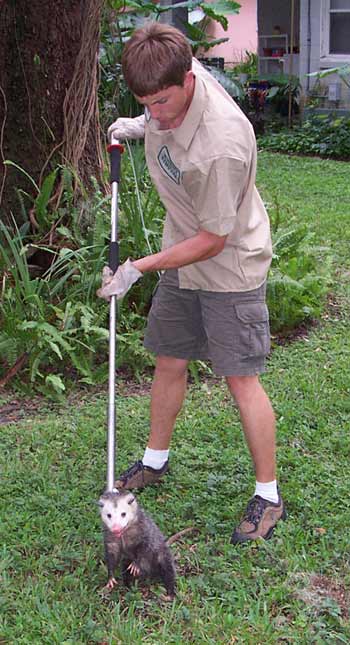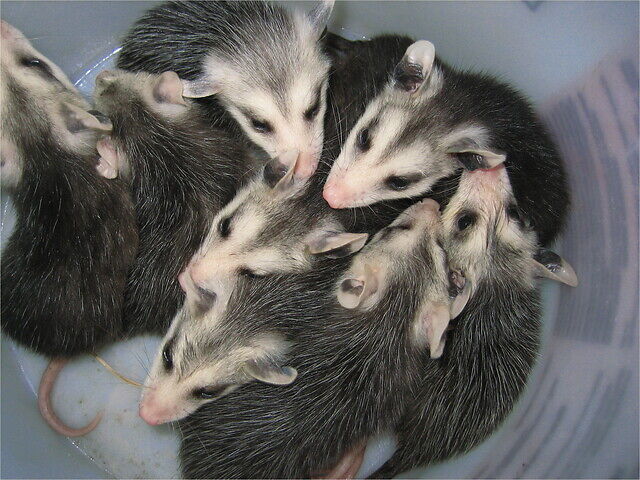The Importance of Wildlife Rehabilitators
Wildlife rehabilitation is a field of study and practice that covers topics such as veterinary medicine, wildlife biology and nutrition, conservation, animal psychology and welfare, and end-of-life wildlife care.
Wildlife rehabilitators are licensed, trained, and permitted professionals that are an integral part of any wildlife species’ welfare. They work in tandem with veterinarians to provide injured, orphaned, or otherwise affected animals with specific care. The ultimate goal, of course, is to release the animal back into the wild upon full recovery. In cases where the animal is unable to be rehabilitated, the wildlife rehabilitator is obligated and trained to end suffering through humane practices (via euthanasia).
Treating and caring for opossums is no different, and they are treated with the same care and compassion as any other wildlife species would be.

Step one should be without question. Always ensure that you actively and immediately contact a wildlife humane service or rehabilitation center upon the discovery of a wild opossum in need. If you are not certified, it is, in fact, against the law to care for or be in possession of a wild animal.
A wildlife rehabilitator’s job duties span widely dependent on the condition of the opossum (or other wildlife species). Below, we will cover the distinct differences of each.
Note: The difference between wildlife care and domestic care is an important distinction. These are not the same, so do not become comfortable and act as if the wildlife you have discovered are your pets. This is illegal and dangerous to both yourself and the animal.
Orphaned Opossums

An orphaned opossum is, in other words, a joey who was recently born but was abandoned by its mother (or its mother was killed).
The creatures in this particular state are most fragile, and it is extremely important that they are put into the care of a critical care professional as fast as possible. In this state, orphaned opossums are more at risk as each moment passes. They are cold, hungry, unprotected, dehydrated, and not yet accustomed to the outside world.
Once in a wildlife rehabilitator’s hands, the orphaned opossum will be cared for with the intention and goal of first warming it up. Once the infant is showing signs of life, the next step is to stimulate them to relieve themselves of body fluids (urine or feces). Lastly, after an evaluation and analysis, the rehabilitator will administer a suckle of fluid.
After the creature has become stable, over the period of rehabilitation, the opossum will be cared for through medicine, proper nutrition, and imitated habitats for comfort and well-being. Once the rehab has been proven successful, the process of humanely releasing the animal into the wild will begin.
Injured Opossums
Although an injured opossum is a completely different scenario as an orphaned infant, the same extreme care must be given in order to ensure successful rehabilitation.
Wildlife rehabilitators often initiate their relationship with the wildlife creature by becoming familiar with it so that it feels comfortable.
After the necessary recovery period has taken place and the physical therapy has shown to be successful, the process of releasing the animal into the wild will begin.
Fun fact: If you come across an opossum that looks dead, give it a chance. Often times, an opossum will fake dead and “play possum” in the face of a threat. This can last up to 4 hours! Don’t poke at it; it won’t react.
In conclusion, don’t act as if you are a licensed wildlife rehabilitator upon the discovery of an in-need wild animal (unless you are one). This can do more harm than good, no matter how good your intentions are. Contact local wildlife assistance as soon as you can.